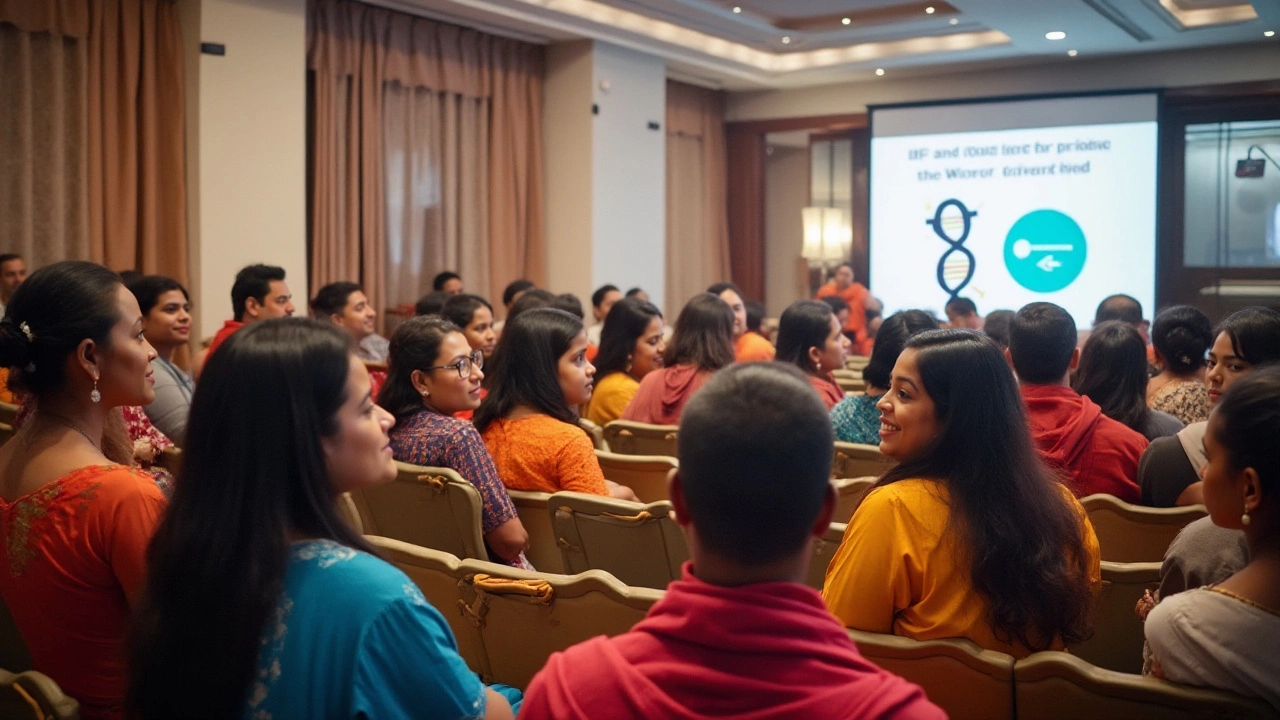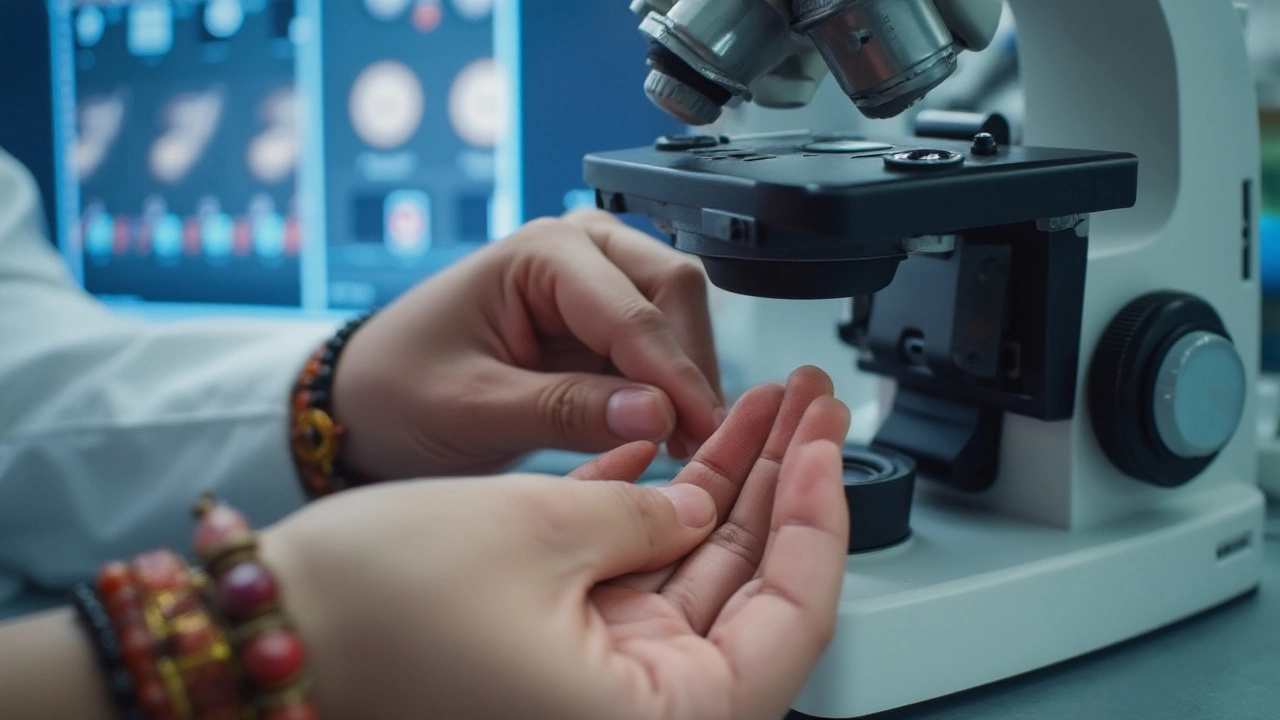In vitro fertilization (IVF) has revolutionized reproductive medicine by offering couples struggling with fertility issues a chance to have children. But beyond assisting with conception, IVF opens the door to the fascinating possibility of selecting a baby's gender.
The process primarily utilizes a technique known as preimplantation genetic diagnosis (PGD), where embryos created via IVF are screened for certain genetic conditions and can reveal the sex. This allows parents to choose which embryo to implant based on their preferred gender, making it an attractive option for many looking to balance their families or avoid sex-linked genetic diseases.
The concept of choosing a child's gender before birth raises many ethical questions and varies in legality from one country to another. Some view it as a modern marvel, while others see potential moral dilemmas. With this article, we delve into the mechanics, ethics, and implications of gender selection with IVF to help prospective parents navigate these intriguing waters.
- Understanding IVF and Gender Selection
- How Preimplantation Genetic Diagnosis Works
- Ethical and Legal Considerations
- Technological Advances in Gender Selection
- Pros and Cons of Choosing Your Baby’s Gender
Understanding IVF and Gender Selection
In vitro fertilization (IVF) stands as a beacon of hope for many couples struggling with fertility issues. At its core, IVF involves combining eggs and sperm outside the body in a laboratory setting to create embryos. Once these embryos reach a certain stage of development, they are then transferred to the uterus in hopes of achieving a successful pregnancy. While IVF is primarily known for its role in treating infertility, it also offers the intriguing potential for gender selection, providing parents the option of choosing the sex of their child before implantation.
This ability to select gender is primarily facilitated through preimplantation genetic diagnosis (PGD), a process originally developed to screen for genetic disorders. PGD works by examining an embryo's chromosomal structure, which includes information about the embryo's sex. Knowing the embryo's gender allows parents to select the desired one for implantation, offering a chance to either balance their families or avoid certain genetic diseases that are sex-linked. However, this capability raises complex ethical and societal questions. The discussion around PGD often becomes a juxtaposition between advancing technology and moral considerations. "Choosing gender through IVF is not just a medical procedure; it's a profound ethical choice," as noted by bioethicist Josephine Johnston.
The allure of gender choice with IVF is not without its constraints and conditions. Different countries have various legal stances on this practice. For instance, while the United States, under certain circumstances, permits gender selection for family balancing, the United Kingdom prohibits it unless it's medically warranted. This discrepancy highlights the global debate on how technology should intersect with ethical norms. Proponents argue it's a matter of personal choice and control over one's reproductive destiny, whereas critics warn against potential societal consequences, such as gender imbalance. Thus, alongside technological prowess, ongoing global dialogues shape the contours of gender selection through IVF.
The process of IVF itself, intricate and multifaceted, requires a backdrop of technological prowess and biological understanding. Embryos are cultivated in laboratory environments meticulously controlled for optimal growth conditions, reflecting the interplay of science and life. Knowing the gender of these embryos early on is revolutionary, yet it demands careful thought and consideration. Understanding the nuanced relationship between science and ethics in IVF opens doors to informed decisions.
In recent years, there has been a surge in interest around IVF and gender selection, driven by increasing awareness and advancements in medical technology. The interest is marked by empirical data. According to recent studies, approximately 5% of all IVF treatments globally involve some form of gender selection, highlighting a growing trend. As science continues to push the boundaries, it is essential to balance these capabilities with conscientious discussion. By understanding both the scientific foundations and the ethical implications, parents can better navigate their journey through IVF gender selection.
How Preimplantation Genetic Diagnosis Works
Preimplantation Genetic Diagnosis, often referred to as PGD, is an advanced scientific method integrated with IVF to assess the genetic profile of embryos before they are implanted into the uterus. The idea is astonishing in its premise and precise in its execution. The procedure begins by harvesting eggs from the ovaries and fertilizing them with sperm in a lab setting. Once fertilization occurs, and embryos begin to develop, PGD is used to test them generally on the third to fifth day post-fertilization. By this stage, embryos have developed enough cells for genetic analysis.
The groundbreaking part happens when a few cells are carefully extracted from the early-stage embryo. This biopsy doesn't harm the embryo, which continues to grow. The retrieved cells are then subjected to genetic testing, revealing detailed information that can determine if the embryo carries any genetic anomalies or, in this context, what its sex is. This selection process is primarily designed to help avoid passing on severe genetic disorders, but it also provides the ability to identify the gender of each embryo.
The accuracy of PGD in determining the embryo's sex is reported to be nearly 99%. According to Dr. Mark Hughes, a pioneer in this field, "We can say with confidence that PGD offers one of the most dependable methods for sex selection." Such precision brings reassurance, especially when sex-linked genetic conditions are in consideration, such as Duchenne Muscular Dystrophy or Hemophilia, which predominantly affect males.
Steps Involved in PGD
The PGD process involves several detailed steps. First, the creation of embryos takes place through IVF. This is not routine for PGD but crucial in setting the stage. Following fertilization, embryos are cultured until they reach a suitable stage for biopsy. After the cells have been collected, a range of genetic tests can be performed. These tests include Fluorescent In Situ Hybridization (FISH) for chromosomal analysis or newer methods like Next Generation Sequencing (NGS) for more comprehensive genetic insights.The advent of such technology represents a phenomenal step in reproductive medicine, but it does come with considerable costs and ethical considerations. The process requires sophisticated laboratory infrastructure and specialized genetic expertise, making it both financially and ethically challenging. It is crucial these factors are taken into account by aspiring parents.
While PGD holds immense potential for gender selection in IVF treatments, aspiring parents should remain informed and considerate of ongoing dialogue surrounding the moral aspects and regulatory policies of different regions. Advances in this field continue to push boundaries and open discussions about the future trajectories of human reproduction.

Ethical and Legal Considerations
The ability to select a child's gender presents compelling ethical dilemmas and legal challenges, sparking debates across societies worldwide. At the core of these discussions is the question of whether the desire to choose gender for non-medical reasons aligns with societal values and ethical principles. Many argue that this practice might reinforce gender stereotypes, valuing one gender over another in cultural contexts where gender preferences are deeply rooted.
One significant ethical consideration relates to the concept of 'playing God.' Critics worry that permitting gender selection for elective reasons might lead down a slippery slope towards designer babies, where physical and intellectual traits could also be chosen. This is a concern for individuals who believe that natural processes should not be meddled with beyond addressing severe medical conditions. Additionally, ethical perspectives vary greatly across religious and cultural lines, making it a complex issue without a universal stance.
Legally, the landscape for gender selection is varied. Countries like India and China have banned the practice due to historic gender imbalances, which led to severe demographic disparities. In contrast, places like the United States adopt a more permissive view, allowing it for family balancing purposes. Often, these choices are guided not just by legal frameworks but also by public opinion and ethical committees reviewing the potential long-term impact of such decisions.
In the words of Dr. John Robertson, a bioethicist,
"The desire to select gender is understandable where there is a risk of transmitting serious sex-linked diseases, but caution must be applied when the motive is non-medical."This viewpoint is often echoed in discussions stressing the need for strict regulation to avoid misuse of this powerful technology.
Another layer to this puzzle is how gender selection via IVF gender selection and preimplantation genetic diagnosis might affect siblings or the child whose gender has been chosen. Ethical debates question whether growing up with the knowledge of gender selection impacts a child's sense of identity or worth. While some studies suggest parental honesty being paramount in such scenarios, the psychological effects are still considered complex and requiring more research.
In summary, while technological strides make gender selection through IVF a feasible option, it remains subject to ongoing ethical considerations and legal regulations. Balancing personal desires with social responsibility raises important questions about the extent to which reproductive choices should be safeguarded or restricted. As science progresses, society must navigate these issues with empathy and caution, ensuring that ethical boundaries are respected while embracing the possibilities of modern medicine.
Technological Advances in Gender Selection
Over the past few decades, IVF gender selection has evolved significantly thanks to technological innovations. While the primary goal of IVF has been to aid fertility, advances have made gender selection more reliable. One of the key techniques driving this progress is preimplantation genetic diagnosis, which leverages the expanding ability of genetic testing to accurately determine the sex of embryos. This process takes place at a stage when the embryos are only a few days old, allowing for sex determination before implantation, thus offering parents the option of selecting an embryo of their preferred gender. Such technological strides have revolutionized family balancing practices.
A significant development in this area is the refinement of embryo biopsy techniques. Scientists have improved methods of extracting cells from embryos without harming them, which was a major concern in earlier days. Modern biopsy techniques now involve removing just a few cells from a multi-cell blastocyst, minimizing the risk of impacting the embryo's development. These advancements have increased the success rates of viable pregnancies following gender selection interventions. Additionally, laboratories have adopted cutting-edge DNA sequencing technologies that enable comprehensive analysis of chromosomal components, making gender identification more precise and reducing the likelihood of errors.
Beyond PGD, new approaches are making headlines. One such method involves sorting sperm cells based on whether they carry an X or Y chromosome, known as sperm sorting, although it is generally less accurate than embryo analysis. Techniques like fluorescence-activated cell sorting have attempted to separate sperm cells to improve accuracy. This method isn't as advanced as PGD but offers potential for non-invasive gender determination. Coupled with advances in digital imaging and artificial intelligence, the scope for accurately selecting an embryo's gender is on the rise. These tools have significantly bolstered embryologists' capabilities, helping them differentiate male from female embryos more efficiently.
As these developments unfold, regulatory bodies and ethical committees continue to review their implications. A poignant perspective was shared by Dr. Emily Zhao, a leading researcher in reproductive technology, who noted,
"While the science is remarkable, it is imperative that we continuously evaluate the ethical landscape of gender selection to ensure it aligns with societal values and human rights."Alongside technological growth, there's increasing dialogue around legal frameworks that vary by region. In some countries, such as the United States, gender selection for family balancing is permitted, whereas Europe and other regions keep strict control, limiting practices to prevent potential abuse or societal bias.
To contextualize these advancements, consider data from a 2023 survey that showed success rates of gender selection exceeding 95% when utilizing PGD. In light of these figures, it’s clear that gender choice IVF can be reliably achieved when paired with the latest technological improvements. This capability gives parents seeking specific gender-selection through IVF a powerful opportunity. As these technologies continue to develop, they hold promise for expanding accessibility, improving success rates, and ensuring ethical compliance in family planning.

Pros and Cons of Choosing Your Baby’s Gender
Deciding to choose your child's gender through IVF gender selection presents a unique set of advantages and drawbacks, which can significantly influence a family's life decisions. On the positive side, one of the most compelling benefits is the ability for parents to balance their family structure. This aspect can be particularly appealing to those who already have children of one gender and wish to experience the joys and challenges associated with raising the opposite gender. Moreover, for couples carrying sex-linked genetic disorders, selecting the gender of their baby can be a crucial step in preventing certain genetic diseases, thus leading to a healthier future for their children.
Additionally, using advanced medical techniques like preimplantation genetic diagnosis (PGD), carries the promise of higher success rates in achieving healthy pregnancies. As reported by several fertility clinics, families who have chosen this option often cite peace of mind knowing that their baby will be free from specific genetic disorders. This is not just a relief to the parents but also a crucial public health victory as it reduces the prevalence of such conditions. However, these perceived benefits do not come without a set of ethical and financial considerations. The process can be prohibitively expensive and is not typically covered by insurance, posing a notable financial burden for many families.
Ethically speaking, the debate around gender selection is highly charged and varies by cultural and legal landscapes across the globe. Critics argue that it opens a Pandora's box of 'designer babies,' where the line between medical necessity and personal preference becomes blurred. Some experts worry this could lead to social imbalance due to gender preference, echoing concerns voiced by organizations like The World Health Organization, which continuously analyzes the demographic impacts.
"Our primary concern is that non-medical sex selection contributes to gender discrimination," states WHO in their gender policy briefing. This underscores a fundamental debate about the natural course of human reproduction and the implications of intervening in such intimate processes.
Bearing in mind the technological advances driving these capabilities, it's interesting to note the regulatory frameworks that vary significantly. In countries like the U.S. and Australia, clinic practices allow for gender selection procedures with certain restrictions. In contrast, countries such as China and India have strict prohibitions, reflecting broader societal values regarding gender. This landscape highlights a patchwork of accessibility, which can limit options for prospective parents based on their geographic location.
Ultimately, the decision to utilize gender selection through IVF treatments is profoundly personal and depends heavily on an individual's values, resources, and cultural context. The choice involves weighing the desire for family balance and health advantages against the financial costs and potential ethical conflicts. Each family's decision-making process will be as distinct as their ambitions for parenthood, reflecting the rich tapestry of motivations driving such a complex undertaking.





